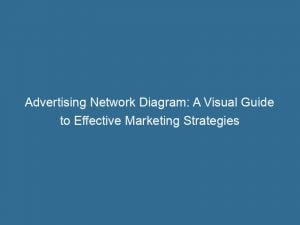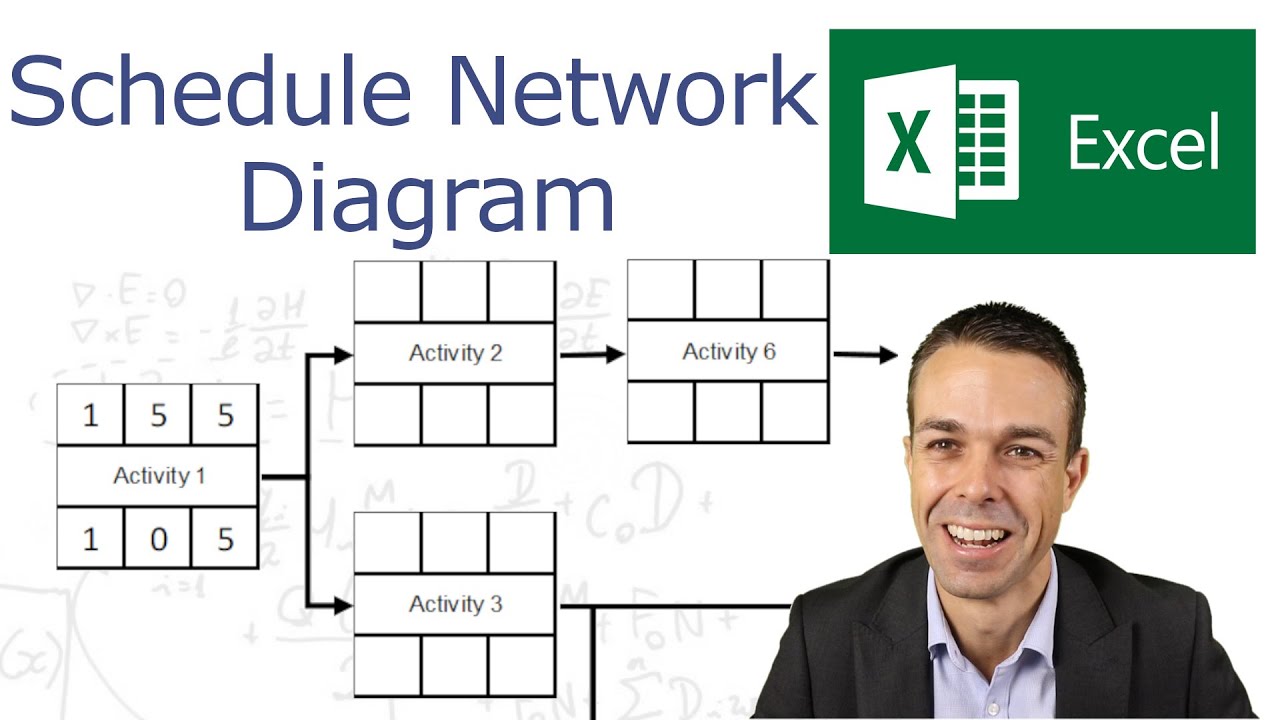In the vast realm of online advertising, a complex web of connections lies at the heart of every successful campaign. Enter the advertising network diagram, a virtual roadmap traversed by advertisers and publishers alike.
This intricate ecosystem acts as a catalyst, connecting those seeking to showcase their products or services with those who possess the platform to do so. With a myriad of services and targeting options on offer, these ad networks not only ensure that unsold ad space finds worthy buyers but also optimize the buying and selling process to drive conversions.
Join us as we unravel the inner workings of this digital marketplace and explore how it revolutionizes the world of online advertising.
Table of Contents
- advertising network diagram
- Introduction: How Ad Networks Connect Advertisers and Websites
- Matching Unsold Inventory: Ad Networks Bridging the Gap
- Securing Buyers for Publishers: How Ad Networks Help Fill Ad Space
- Varied Costs: Pricing Options in Ad Network Usage
- Notable Ad Networks: Google Adsense, Media.net, PopAds, and More
- Streamlining the Process: Buying and Selling Ad Inventory Made Easy
- Connecting Publishers and Advertisers: The Central Role of Ad Networks
- Key Features: Campaign Creation for Advertisers and Website Integration for Publishers
advertisingnetwork diagram
An advertisingnetwork diagram represents the interconnected relationship between advertisers, publishers, and ad networks. These networks serve as intermediaries, connecting advertisers with websites that are seeking ad placements.
Ad networks play a crucial role in the advertising ecosystem by collecting unsold ad inventory from publishers and matching it with interested advertisers. This helps publishers secure buyers for their unsold ad space and allows advertisers to reach their target audience more effectively.
Ad networks like Google Adsense, Media.net, and Adcash offer a range of services and targeting options to streamline the process of buying and selling ad inventory. They earn revenue by taking a cut of the ad revenue or marking up inventory before selling it.
Overall, the use of an ad network can greatly benefit advertisers in reaching their desired audience and increasing conversions.
Key Points:
- Advertising network diagram illustrates the relationship between advertisers, publishers, and ad networks.
- Ad networks connect advertisers with websites seeking ad placements, acting as intermediaries.
- Ad networks collect unsold ad inventory from publishers and match it with interested advertisers.
- Google Adsense, Media.net, and Adcash are examples of ad networks offering various services and targeting options.
- Ad networks generate revenue by taking a cut of ad revenue or marking up inventory before selling it.
- The use of ad networks greatly benefits advertisers in reaching their target audience and increasing conversions.
Sources
https://blog.hubspot.com/marketing/what-are-ad-networks
https://www.orbitmedia.com/blog/marketing-diagrams/
https://www.spiceworks.com/marketing/programmatic-advertising/articles/what-is-an-ad-network-definition-types-and-examples/
https://creately.com/guides/network-diagram-guide-tutorial/
Check this out:
💡 Pro Tips:
1. Explore niche-specific ad networks: In addition to popular ad networks like Google Adsense, consider researching and utilizing niche-specific ad networks that cater specifically to your target audience. This can help you effectively reach and connect with your desired demographic.
2. Optimize your ad placements: Experiment with different ad placements on your website to find the most effective positions that yield maximum click-through rates. Testing different layouts and positions can help you optimize your ad revenue.
3. Use retargeting campaigns: Implementing retargeting campaigns through ad networks can be a powerful way to re-engage potential customers who have previously visited your website. These campaigns can help increase conversion rates and drive more conversions.
4. Leverage advanced targeting options: Take advantage of ad networks that offer advanced targeting options such as demographic targeting, location targeting, interest targeting, and device targeting. These features can help you reach a more precise and relevant audience, resulting in better ad performance and higher ROI.
5. Monitor ad performance and make adjustments: Regularly monitor the performance of your ads on the ad network’s campaign panel. Analyze key metrics such as click-through rates, conversion rates, and ROI, and make necessary adjustments to optimize your campaign for better results.
Introduction: How Ad Networks Connect Advertisers and Websites
Ad networks play a crucial role in the world of digital advertising, acting as intermediaries that connect advertisers looking for exposure with websites seeking to monetize their platforms. These networks serve as facilitators, effectively bridging the gap between supply and demand in the online advertising ecosystem.
By harnessing their extensive reach and technological capabilities, ad networks streamline the process of buying and selling ad inventory online.
Ad networks act as aggregators, collecting unsold ad inventory from publishers and matching them with advertisers who are interested in reaching their target audience. They create an efficient marketplace where publishers can monetize their available ad space, while advertisers can find prominent platforms to showcase their products or services.
Through the use of ad network platforms, the process of connecting advertisers and websites is made significantly easier and more efficient.
Matching Unsold Inventory: Ad Networks Bridging the Gap
One of the primary functions of ad networks is to match unsold ad inventory from publishers with advertisers who are searching for suitable platforms to display their ads. Publishers often struggle to sell all of their available ad space directly to advertisers, leading to a situation where valuable inventory remains unused.
Ad networks step in to solve this problem by leveraging their extensive network of advertisers to fill these gaps in ad space.
When publishers partner with an ad network, they gain access to a vast pool of potential advertisers. The network’s sophisticated algorithms and targeting capabilities ensure that the right ads are matched with the right audiences, maximizing the effectiveness and relevance of the campaigns.
This matchmaking process allows publishers to generate revenue from their unsold inventory, while advertisers can reach their target audience through reputable websites.
Securing Buyers for Publishers: How Ad Networks Help Fill Ad Space
Ad networks play a key role in helping publishers secure buyers for their ad space. Publishers often have limited resources to attract and negotiate with advertisers directly, and this is where ad networks prove invaluable.
These networks act as sales teams for publishers, actively promoting and selling their available ad space to advertisers.
Ad networks have sales teams specialized in reaching out to potential advertisers, highlighting the value and benefits of advertising on their partner websites. By actively marketing the inventory, ad networks increase the chances of securing buyers for publishers.
This cooperative effort benefits both parties, ensuring that publishers can monetize their websites while advertisers gain access to quality ad space.
Varied Costs: Pricing Options in Ad Network Usage
The cost of using an ad network can vary depending on the specific network and the pricing model chosen. Ad networks typically offer various pricing options to cater to different advertiser needs.
Some ad networks employ fixed rates, where advertisers pay a predetermined amount for a set period or specific position on a website. This model provides advertisers with certainty regarding the costs of their campaigns.
Alternatively, ad networks may offer cost-per-click (CPC) or cost-per-impression (CPM) options, where advertisers pay based on the number of clicks or impressions their ads receive.
It is important for advertisers to carefully consider their objectives and budget when selecting a pricing model. Fixed rates may be more suitable for campaigns with specific goals, while CPC/CPM options allow for more flexibility and potential cost savings.
Notable Ad Networks: Google Adsense, Media.net, PopAds, and More
Numerous ad networks exist in the market, each offering various services and targeting options. Some of the most prominent ad networks include Google Adsense, Media.net, PopAds, PropellerAds, BidVertiser, Adcash, and AdThrive.
Google Adsense, the largest and most well-known ad network, provides advertisers with access to a vast network of publishers across the internet. Its advanced targeting capabilities and vast reach make it a popular choice for advertisers of all sizes.
Media.net offers contextual advertising solutions, allowing advertisers to reach relevant audiences through targeted placements. PopAds focuses on pop-under and pop-up ads, providing a high level of visibility and engagement for advertisers.
PropellerAds and BidVertiser offer a range of targeting options and innovative ad formats. Adcash and AdThrive specialize in optimizing ad placements for publishers, ensuring maximum revenue generation.
Streamlining the Process: Buying and Selling Ad Inventory Made Easy
Ad networks streamline the process of buying and selling ad inventory, making it easier and more efficient for both advertisers and publishers. These networks provide a centralized platform where advertisers can create and manage their campaigns, while publishers can integrate ad network tags on their websites to effectively monetize their available space.
By providing a user-friendly campaign panel, ad networks enable advertisers to easily create, monitor, and optimize their campaigns. Advanced targeting options and analytics tools allow advertisers to track ad performance, make data-driven decisions, and maximize their return on investment.
On the other hand, publishers can effortlessly integrate ad network tags on their websites, providing them with a hassle-free way to monetize their available inventory.
Connecting Publishers and Advertisers: The Central Role of Ad Networks
Ad networks serve as the central hub that connects publishers and advertisers in the digital advertising ecosystem. They play a pivotal role in driving the success of online advertising campaigns by facilitating the seamless exchange of ad inventory between publishers and advertisers.
Ad networks aggregate publishers with available ad inventory and connect them to advertisers who are seeking prominent platforms to showcase their ads. Through their extensive network and sophisticated targeting capabilities, ad networks ensure that the right ads are displayed to the right audiences, increasing the likelihood of conversions for advertisers.
This symbiotic relationship allows publishers to generate revenue from their websites while providing advertisers with valuable exposure to their target audience.
Key Features: Campaign Creation for Advertisers and Website Integration for Publishers
For advertisers, a crucial feature of ad networks is the ability to create, manage, and optimize advertising campaigns through a dedicated campaign panel. This panel allows advertisers to customize targeting options, set budgets, and monitor the performance of their ads.
Advanced analytics tools provide insights into ad performance, enabling advertisers to make data-driven decisions to maximize their results.
For publishers, the integration of ad network tags on their websites is a key feature. These tags enable the placement of ads on their websites and facilitate revenue generation through the monetization of ad space.
By seamlessly integrating these tags, publishers can effectively monetize their online assets without disrupting the user experience.
In conclusion, ad networks are essential components of the digital advertising landscape, seamlessly connecting advertisers and websites seeking exposure. By matching unsold ad inventory with advertisers, securing buyers for publishers, and streamlining the buying and selling process, ad networks enhance the efficiency and effectiveness of online advertising.
The utilization of ad networks with varied pricing options, such as Google Adsense, Media.net, PopAds, and others, allows advertisers to reach their target audience, while publishers can monetize their available inventory. The comprehensive features offered by ad networks empower advertisers to create and manage campaigns and enable publishers to integrate ad placements seamlessly.
With the right ad network, businesses can effectively reach their audience and achieve their marketing goals.












